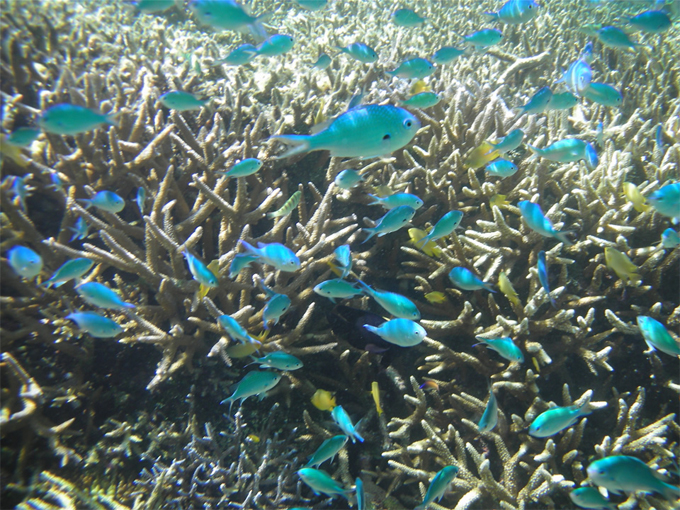In addition to coral bleaching events, increases in ocean temperatures are having another affect on reef building corals, with populations of some species migrating away from the equator. A new study found corals around Japan shifting north to waters thought once too cold to support these species. The research is showing some quick action in the ocean and reef ecosystem in the face of climate-changing events like the warming of the ocean.
The study is coming out in the Geophysical Research Letters and is the first documentation of coral mass migration although it does match up with other recent observations across the globe. In Japan, one type of coral has been observed running north at 14 kilometers a year, getting a boost from ocean currents. In 2004 in Florida, some staghorn and elkhorn corals were observed farther north than their normal ranges. On the other side of the equator, some reef fish have been observed further south than ever seen before.
The research Hiroya Yamano of the Center for Global Environmental Research in Tsukuba, Japan, and his colleagues conducted looked into the records of all the corals seen in Japanese waters since the 1930s. Over the last 100 years ocean surface temperatures in Japan have increased 0.7–2.4 °C.
Yamano and his team had enough information on nine different types of coral to determine the locations of colonies. Of the nine, four have shifted towards the poles over the last 80 years and five have remained stable. Interestingly enough, the four that have moved are listed as ‘near threatened’ or ‘vulnerable’ by the International Union for Conservation of Nature since 1998.
The staggering speed of the coral migration is what is garnering interest from the scientific community. As some have noted, the process is rather fast as the range and rate of expansion of land-dwelling plants and animals have been observed at even less than a kilometer a year and for animals on the ocean floor the rate has been slightly less than 5 km a year.
The team also notes that there are many places where ocean currents run polewards, such as along the east coasts of the United States, South America, Africa and Australia — all of which could help help carry coral polyps to newly suitable areas for colonies or reefs.
[via Nature News]




